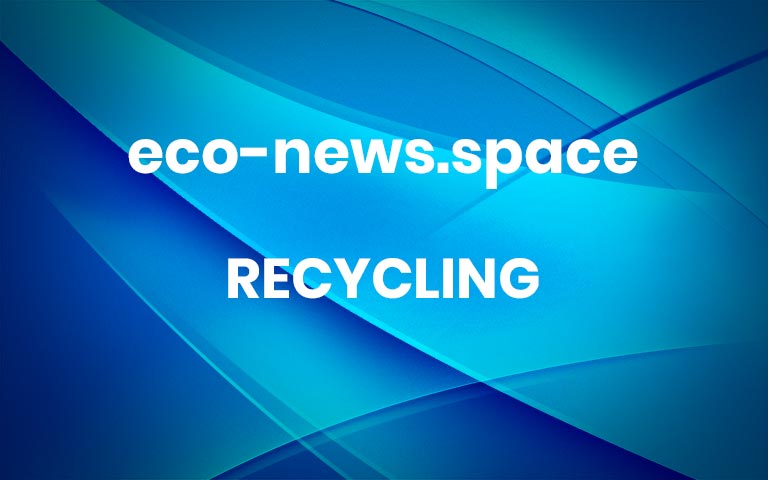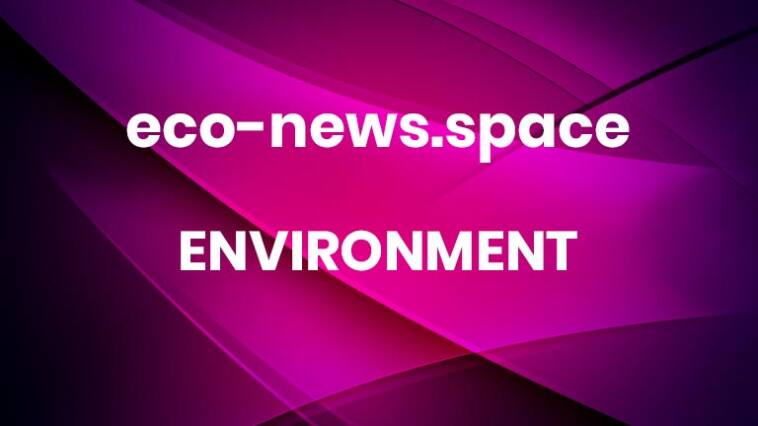HOTTEST

The future of lighting waste is looking brighter as light bulbs become greener and smarter, however we still have a long way to go. In Australia, millions of light bulbs are discarded into the rubbish bin and eventually end up in landfill every year. In fact, authorities estimate 95 per cent of mercury-containing lamps are […] More

The accumulation of plastic waste in the oceans, soil, and even in our bodies is one of the major pollution issues of modern times, with over 5 billion tons disposed of so far. Despite major efforts to recycle plastic products, actually making use of that motley mix of materials has remained a challenging issue.
A key problem is that plastics come in so many different varieties, and chemical processes for breaking them down into a form that can be reused in some way tend to be very specific to each type of plastic. Sorting the hodgepodge of waste material, from soda bottles to detergent jugs to plastic toys, is impractical at large scale. Today, much of the plastic material gathered through recycling programs ends up in landfills anyway. Surely there’s a better way.
According to new research from MIT and elsewhere, it appears there may indeed be a much better way. A chemical process using a catalyst based on cobalt has been found to be very effective at breaking down a variety of plastics, such as polyethylene (PET) and polypropylene (PP), the two most widely produced forms of plastic, into a single product, propane. Propane can then be used as a fuel for stoves, heaters, and vehicles, or as a feedstock for the production of a wide variety of products — including new plastics, thus potentially providing at least a partial closed-loop recycling system.
The finding is described today in the open access journal JACS Au, in a paper by MIT professor of chemical engineering Yuriy Román-Leshkov, postdoc Guido Zichitella, and seven others at MIT, the SLAC National Accelerator Laboratory, and the National Renewable Energy Laboratory.
Recycling plastics has been a thorny problem, Román-Leshkov explains, because the long-chain molecules in plastics are held together by carbon bonds, which are “very stable and difficult to break apart.” Existing techniques for breaking these bonds tend to produce a random mix of different molecules, which would then require complex refining methods to separate out into usable specific compounds. “The problem is,” he says, “there’s no way to control where in the carbon chain you break the molecule.”
But to the surprise of the researchers, a catalyst made of a microporous material called a zeolite that contains cobalt nanoparticles can selectively break down various plastic polymer molecules and turn more than 80 percent of them into propane.
Although zeolites are riddled with tiny pores less than a nanometer wide (corresponding to the width of the polymer chains), a logical assumption had been that there would be little interaction at all between the zeolite and the polymers. Surprisingly, however, the opposite turned out to be the case: Not only do the polymer chains enter the pores, but the synergistic work between cobalt and the acid sites in the zeolite can break the chain at the same point. That cleavage site turned out to correspond to chopping off exactly one propane molecule without generating unwanted methane, leaving the rest of the longer hydrocarbons ready to undergo the process, again and again.
“Once you have this one compound, propane, you lessen the burden on downstream separations,” Román-Leshkov says. “That’s the essence of why we think this is quite important. We’re not only breaking the bonds, but we’re generating mainly a single product” that can be used for many different products and processes.
The materials needed for the process, zeolites and cobalt, “are both quite cheap” and widely available, he says, although today most cobalt comes from troubled areas in the Democratic Republic of Congo. Some new production is being developed in Canada, Cuba, and other places. The other material needed for the process is hydrogen, which today is mostly produced from fossil fuels but can easily be made other ways, including electrolysis of water using carbon-free electricity such as solar or wind power.
The researchers tested their system on a real example of mixed recycled plastic, producing promising results. But more testing will be needed on a greater variety of mixed waste streams to determine how much fouling takes place from various contaminants in the material — such as inks, glues, and labels attached to the plastic containers, or other nonplastic materials that get mixed in with the waste — and how that affects the long-term stability of the process.
Together with collaborators at NREL, the MIT team is also continuing to study the economics of the system, and analyzing how it can fit into today’s systems for handling plastic and mixed waste streams. “We don’t have all the answers yet,” Román-Leshkov says, but preliminary analysis looks promising.
The research team included Amani Ebrahim and Simone Bare at the SLAC National Accelerator Laboratory; Jie Zhu, Anna Brenner, Griffin Drake and Julie Rorrer at MIT; and Greg Beckham at the National Renewable Energy Laboratory. The work was supported by the U.S. Department of Energy (DoE), the Swiss National Science Foundation, and the DoE’s Office of Energy Efficiency and Renewable Energy, Advanced Manufacturing Office (AMO), and Bioenergy Technologies Office (BETO), as part of the the Bio-Optimized Technologies to keep Thermoplastics out of Landfills and the Environment (BOTTLE) Consortium. More

People are switching on to the benefits of lighting recycling to protect the environment and combat our growing waste challenges. Millions of old light bulbs and lamps still end up in landfill every year, even though most lighting waste should be recycled. There are a variety of benefits to recycling lighting waste, such as preventing […] More

Australia’s peak recycling body has called for a national battery recycling scheme to tackle the growing problem seriously and prevent batteries from exploding in recycling facilities. The Australian Council of Recycling (ACOR) has urged the national and state governments to take immediate action and establish a national product stewardship and recycling scheme for handheld batteries. […] More

Building construction accounts for a huge chunk of greenhouse gas emissions: About 36 percent of carbon dioxide emissions and 40 percent of energy consumption in Europe, for instance. That’s why the European Union has developed regulations about the reuse of building materials.
Some cities are adding more material reuse into construction already. Amsterdam, for example, is attempting to slash its raw material use by half by 2030. The Netherlands as a whole aims for a “circular economy” of completely reused materials by 2050.
But the best way to organize the reuse of construction waste is still being determined. For one thing: Where should reusable building materials be stored before they are reused? A newly published study focusing on Amsterdam finds the optimal material reuse system for construction has many local storage “hubs” that keep materials within a few miles of where they will be needed.
“Our findings provide a starting point for policymakers in Amsterdam to strategize land use effectively,” says Tanya Tsui, a postdoc at MIT and a co-author of the new paper. “By identifying key locations repeatedly favored across various hub scenarios, we underscore the importance of prioritizing these areas for future circular economy endeavors in Amsterdam.”
The study adds to an emerging research area that connects climate change and urban planning.
“The issue is where you put material in between demolition and new construction,” says Fábio Duarte, a principal researcher at MIT’s Senseable City Lab and a co-author of the new paper. “It will have huge impacts in terms of transportation. So you have to define the best sites. Should there be only one? Should we hold materials across a wide number of sites? Or is there an optimal number, even if it changes over time? This is what we examined in the paper.”
The paper, “Spatial optimization of circular timber hubs,” is published in NPJ Nature Urban Sustainability. The authors are Tsui, who is a postdoc at the MIT Senseable Amsterdam Lab in the Amsterdam Institute for Advanced Metropolitan Solutions (AMS); Titus Venverloo, a research fellow at MIT Senseable Amsterdam Lab and AMS; Tom Benson, a researcher at the Senseable City Lab; and Duarte, who is also a lecturer in MIT’s Department of Urban Studies and Planning and the MIT Center for Real Estate.
Numerous experts have previously studied at what scale the “circular economy” of reused materials might best operate. Some have suggested that very local circuits of materials recycling make the most sense; others have proposed that building-materials recycling will work best at a regional scale, with a radius of distribution covering 30 or more miles. Some analyses contend that global-scale reuse will be necessary to an extent.
The current study adds to this examination of the best geographic scale for using construction materials again. Currently the storage hubs that do exist for such reused materials are chosen by individual companies, but those locations might not be optimal either economically or environmentally.
To conduct the study, the researchers essentially conducted a series of simulations of the Amsterdam metropolitan area, focused exclusively on timber reuse. The simulations examined how the system would work if anywhere from one to 135 timber storage hubs existed in greater Amsterdam. The modeling accounted for numerous variables, such as emissions reductions, logistical factors, and even how changing supply-and-demand scenarios would affect the viability of the reusehubs.
Ultimately, the research found that Amsterdam’s optimal system would have 29 timber hubs, each serving a radius of about 2 miles. That setup generated 95 percent of the maximum reduction in CO2 emissions, while retaining logistical and economic benefits.
That results also lands firmly on the side of having more localized networks for keeping construction materials in use.
“If we have demolition happening in certain sites, then we can project where the best spots around the city are to have these circular economy hubs, as we call them,” Duarte says. “It’s not only one big hub — or one hub per construction site.”
The study seeks to identify not only the optimal number of storage sites, but to identify where those sites might be.
“[We hope] our research sparks discussions regarding the location and scale of circular hubs,” Tsui says. “While much attention has been given to governance aspects of the circular economy in cities, our study demonstrates the potential of utilizing location data on materials to inform decisions in urban planning.”
The simulations also illuminated the dynamics of materials reuse. In scenarios where Amsterdam had from two to 20 timber recycling hubs, the costs involved lowered as the number of hubs increased — because having more hubs reduces transportation costs. But when the number of hubs went about 40, the system as a whole became more expensive — because each timber depot was not storing enough material to justify the land use.
As such, the results may be of interest to climate policymakers, urban planners, and business interests getting involved in implementing the circular economy in the construction industry.
“Ultimately,” Tsui says, “we envision our research catalyzing meaningful discussions and guiding policymakers toward more informed decisions in advancing the circular economy agenda in urban contexts.”
The research was supported, in part, by the European Union’s Horizon 2020 research and innovation program. More






